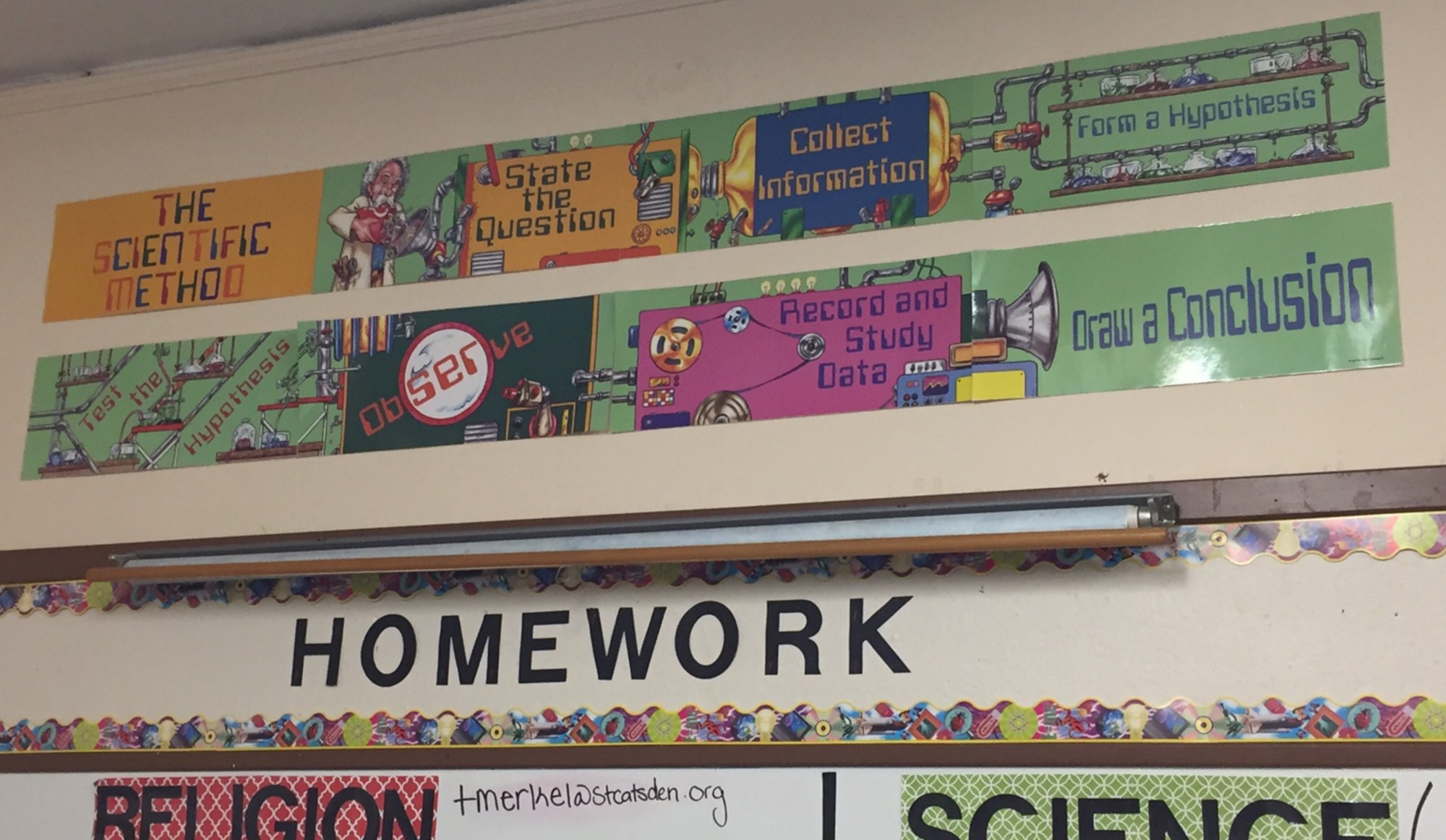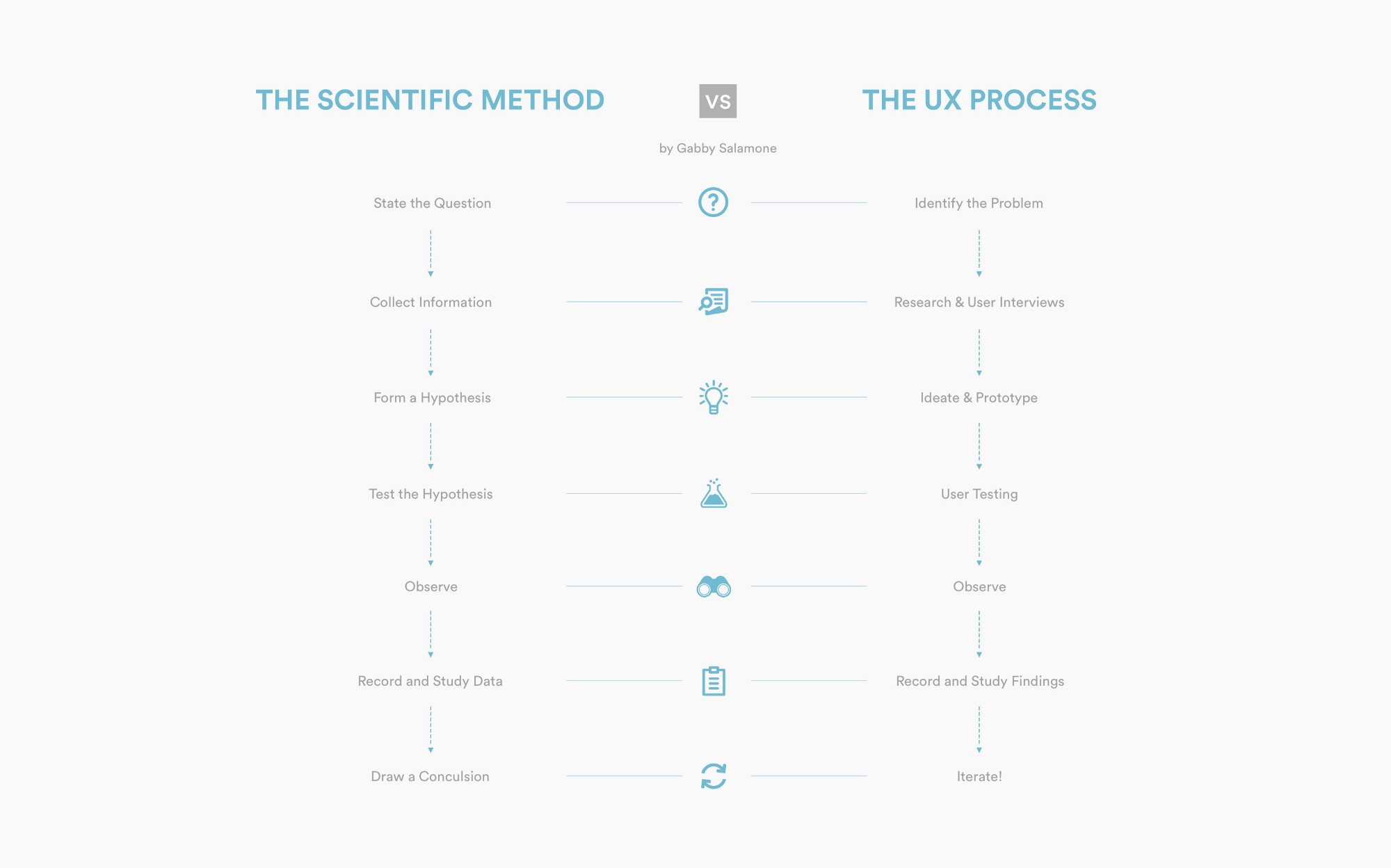
Photo by chuttersnap
It was a cold Thursday evening in February and I was less than stoked to be sitting in an 8th grade classroom at St. Catherine’s listening to Deacon Colin’s dry jokes and speech outlining the importance of this marriage preparation course. Trying to look engaged and interested in the conversation at hand, this was very important to my soon to be mother-in-law after all, my eyes wandered around the room to the infographic describing the scientific method tapped to the wall above the homework chalkboard.

Seeing the infographic was nostalgic, science was my second favorite class in school (art was the first, a foreshadowing of my future career as a designer). I thought back to my 8th grade science teacher, Mr. Bond. I loved that class. I sat right up front and would ask a zillion questions, especially when it came to science experiments. I was always interested in how things worked, why they worked or didn’t work, and how to make them better.
I still have this curiosity today which is extremely valuable when it comes to UX research and design. Looking at the infographic I couldn’t help but see the similarities that a solid UX process has to the scientific method that we all learned in grade school.

State The Question
In the UX world this is synonymous with identify the real world people problem.
Collect Information
In terms of the UX process this boils down to:
Research
Explore what’s out there. Are there other products or services trying to solve this same problem? If so, what are they doing well? What are they doing not so well? How can we improve upon the solution or solve the problem in a completely different way? What types of people are affected by this problem? It’s important to research both products and services as well as people. Researching people could be interviewing people that meet the characteristics and demographics of our target audience(s).
Define Personas
Determine people that are affected by this problem. Using our initial research will help us define our personas. What are their likes, dislikes? What motivates them? What frustrates them? What are their goals? What are their needs? What are they trying to accomplish? How can we help them achieve their goals? What are their pain points in terms of this particular problem? When we get to the step in the process where we start to sketch design solutions to the problem, having clearly defined personas will help us stay focused on who we are designing for and help us empathize with the user’s wants and needs.
User Interviews
This is a critical part of the process, and my favorite. We take our defined personas and recruit people that have the same goals, desires, and needs of our personas. The goal of the user interviews is to identify behavioral patterns as well as validate our defined persona characteristics and to fill in any gaps that may be missing from our personas. During the user interviews we aim to better understand how this problem is affecting the user and start to identify opportunities to help solve the problem. We understand the user’s mental model — how they think and the user’s journey — how they might interact with the product.
Form a hypothesis
This is the meat of the UX process. We start this part of the process by storyboarding our user’s journey so we have a clear understanding of how users might interact with our product or service. We then sketch many different design solutions to the problem, keeping in mind our user’s journey, mental model, motivations, needs, and goals. It’s important to note we will form many hypotheses (design solutions) for specific workflows or features and test these solutions incrementally by using the agile methodology of tight feedback loops and iterate accordingly. When we have a concrete design solution for a specific workflow or feature that we like we take the solution back to users for feedback.
Test the hypothesis
In the UX world we call this User Testing. This is where we let users interact with our prototype. We give them a task and see how easy or difficult it is for them to accomplish the task. It’s important to make the user comfortable. At my current company Spire Digital, we like to let users know “we aren’t testing you, we’re testing the design, so please be as open and honest as you can — you it won’t hurt our feelings.” We ask questions like what’s going through your mind as you look at this? Is this what you expected? Why or why not? How could we make this more useful for you?
Observe
It’s also important to watch users closely. Where are they struggling? What is their facial expression like? (body language is key and super valuable)
Record and Study Data
While user testing it’s important to take note of the issues users encountered while interacting with our prototype. Where did they struggle? Was anything unclear? How can we make something better? It’s also good to note some things that were done well. Was this intuitive? Did they get through the task with ease? Were they delighted? The little details matter in UX design — surprise and delight can be as simple as conversational language, to as intricate as being proactive — knowing what users want before they even know (the research, defined personas, and user interviews helps with this).
Draw a Conclusion
Did we solve the problem? And better yet, did we solve the problem in the most effective way? Most of the time we might have solved the problem but see ways were we can iterate and make the solution better and that’s okay. That’s the beauty of our field, we don’t have be perfect on the first try. The lean methodology that is widely popular in the UX world allows and encourages continuous improvement — kaizen.
Full circle
As I continue to pretend to pay attention as the deacon rambles on, I smile and think my 8th grade self would be proud to see where I am now. I found a way to combine my passion for art with my passion for science and I am in fact still learning how things work and making those things better —transforming those things into meaningful, elegant, experiences that help people’s everyday lives.
